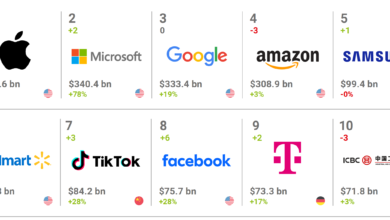Brand ranking
Brand ranking involves evaluating and listing brands based on specific criteria such as brand value, market share, customer satisfaction, or other relevant metrics. Rankings can vary depending on the industry, region, or the metrics used. Here’s how brand ranking is typically approached:
1. Criteria for Ranking:
Brand Value: Often assessed by financial worth, typically measured by agencies like Interbrand, Brand Finance, or Forbes.
Market Share: The percentage of total sales or revenue a brand holds within its industry.
Customer Loyalty: Measured through customer retention rates, repeat purchases, and Net Promoter Scores (NPS).
Brand Awareness: How widely recognized the brand is among its target audience.
Brand Perception: Customer sentiment and the brand’s reputation in the market.
Global Reach: The brand’s presence and influence in international markets.
2. Methodologies Used:
Interbrand: Focuses on brand value, combining financial performance, brand strength, and brand role.
Brand Finance: Provides a comprehensive analysis that includes brand strength, royalty rates, and revenue forecasts.
Forbes: Typically ranks brands based on brand value, sales, and the role of the brand in consumer purchasing decisions.
Customer Surveys: Direct feedback from consumers about their preferences, loyalty, and perceptions.
Market Analysis: Examination of market share, growth rates, and competitive positioning.
-

Top 10 world brands, best global brands 2024
In the rapidly evolving global market of 2024, the rankings of the most valuable brands are a reflection of innovation,…
Read More »

